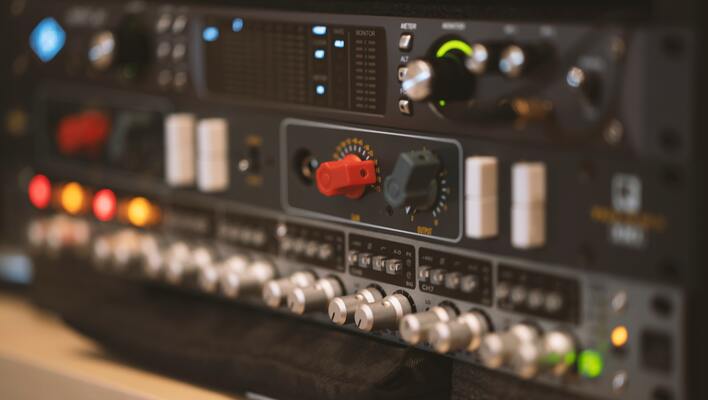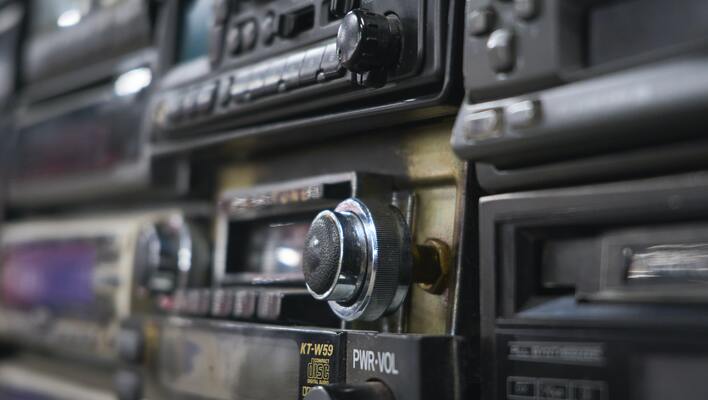Music enthusiasts state, “Bad sound quality is worse than no music at all.” Music has infinite possibilities; thus, in this digital age, sound quality can make all the difference in the world.
If you’ve recently started the search for a high-quality amplifier, the questions you’re probably asking yourself include: “Which is better, class D or class AB amplifiers?”. If they are your main considerations while shopping, this post will help you make your choice easier.
Both amplifiers can deliver great sound quality, but their differences are noteworthy. We will focus on the differences between these two types of amplifiers, how they work, and their benefits.
The differences between them are technical details you should consider if you are keen on getting the best out of your amplifier. The main difference is their output voltage and power supply voltage. Additionally, they have different sound quality as well. Both classes are solid and reliable, but which is better, class D or class AB amplifiers?
To answer this question, let’s take a look at both audio amplifier class D vs AB in depth:

Class D Amplifier Review
A Class D amplifier uses a higher frequency current and a transformer to generate power. This type of amplifier is known as a Class D amplifier because it has a Class D power supply, meaning that it operates at a frequency of between 50 and 100 kHz.
Unlike traditional amplifiers, which use switches to turn on and off the current flow, class D amplifiers use digital control. The advantage of using digital control over analog control is that it can be microprocessor controlled. This increases the amplifier’s efficiency by allowing it to run at full power.
These amplifiers also have no standby losses (the losses associated with switching), making them very efficient compared to many other amplifiers.
Class D amplifiers are the most efficient and quietest amplifier types, making them suitable for motors and other applications where quiet operation is essential. The key to the Class D amplifier is the switching element, which turns on or off the current flowing through the output device (usually a speaker).
Class D amplifiers can be used in many different applications, including:
- Audio systems such as car audio systems.
- Digital sound processing.
- Speakers.
- Home theater systems.
Class D Amplifier Features
Class D amplifiers have the following features:
1. Output power
Class-D amplifiers can produce high levels of output power, which is why they are used in applications where high efficiency is needed. Class D amplifiers can power speakers, subwoofers, and other devices with an output of up to 200 watts per channel.
The products from companies such as Rockford Fosgate also have a built-in protection circuit that will prevent overheating when the amplifier is turned on.
2. Efficiency
Power efficiency is a measure of how well an electronic device converts its input energy into useful work. In order to achieve this efficiency, Class D amplifiers use fewer components and generate less waste heat than traditional amplifiers do.
This means that they are more efficient than traditional amplifiers, which means they can generate more power with less power consumption overall.
3. Noise
Class D amps produce less noise than other types because they use digital signal processing instead of analog signal processing like traditional amps.
Digital signal processing allows them to quickly adjust their output voltage according to what’s happening inside the amp. So, there’s no need for an analog circuit to control noise levels.
4. Low power consumption
One of the most important features of this type of amplifier is its ability to achieve high-efficiency levels while maintaining low power consumption. This means they do not need to use much electricity during normal operations.
They only draw power when needed by turning on or shutting off certain components in the system. This makes them ideal for portable devices because they do not require much energy from their owners at any given time.
5. Efficient heat production
Class D amps do not produce too much heat. Unchecked heat can cause damage over time if left on for too long without adequate ventilation or cooling mechanisms installed.
These amplifiers use fewer components and generate less waste heat than traditional amplifiers. This means they are more efficient than traditional amplifiers since they generate more power with less power consumption overall.
6. Digital signal processor
They use a digital signal processor that converts digital input signals into analog output signals. Digital signal processing allows them to quickly adjust their output voltage according to what’s happening inside the amp. Thus, there’s no need for an analog circuit to control noise levels. This amplifier also has very low distortion, which means less heat and greater efficiency.
Pros and Cons of Class D Amplifiers
Pros
- Great power output.
- Easy to use.
- Superb efficiency.
- Compact size.
- Excellent overload protection.
- Fast recovery time after power loss.
- Silent operation (no fan noise).
Cons
- High price: It costs more than some other amplifiers on the market.
- Smaller than their counterparts.
- Not flexible as some other types of amplifiers in terms of output voltage range or gain settings.

Class AB Amplifier Review
A class AB amplifier is a type of power amplifier. Unlike other amplifiers, it produces its output by actively controlling the current flowing into the output device instead of passively increasing or decreasing the voltage. The control method used is called active feedback, which uses a feedback loop to keep the amount of current flowing past any given point in the circuit constant.
Walter Bose first proposed the concept of class AB operation in 1937. The technical name for this type of operation is “push-pull” because it involves two separate power stages; one pushing (pushing) and one pulling (pulling).
Each stage comprises single transistors connected in pairs, with their bases and collector terminals connected to each other.
Class A amplifiers produce a constant current when the signal is turned on. As the current increases, so does the voltage output of the amplifier. This results in a continuous increase in power output until clipping occurs and output power reaches its maximum level. This design has very low distortion and high efficiency.
Class AB Amplifier Features
Class AB amplifiers have the following features:
1. Noise reduction
Class AB amplifiers use a more complex topology than conventional Class B designs, including a separate power supply rail for each amplification stage. This makes them more efficient, which means less heat and noise dissipated into your speakers.
2. Lower distortion
Because they don’t have to work as hard as traditional Class B designs do at high frequencies (where most of the gain is), class AB amplifiers don’t have as much gain for their size and weight, which means less distortion at those frequencies (and thus less audible noise).
3. Excellent dynamic range
This is the range difference between the highest volume level and the lowest volume level.
Class AB amps use multiple output stages. Thus, they can increase the dynamic range from a single-ended design simply by adding more stages (up to four in this case).
This means they can reproduce sounds accurately without distorting them or causing clipping (an unwanted response). This makes the amps great for musical instruments such as drums or guitars, where good sound quality is important for creating realistic music performances.
4. Efficiency
The efficiency or gain of a Class AB amplifier is determined by how much current it can deliver to its load, such as an audio speaker, compared with its input power supply voltage.
An efficient amplifier will require less input power than an inefficient one to produce the same output level. This means we can use fewer amps to drive our speakers, resulting in lower power consumption overall.
5. Power Supply
The power supply current in a Class AB amplifier is limited by the maximum allowed by its design specifications. It cannot exceed those limits without risking damage to itself or other components within its circuitry.
Advantages and Disadvantages of Class AB Amps
Pros:
- It has a good sound quality.
- It can be used in any environment, such as outdoors or indoors.
- It is cheap compared to other amplifiers.
- It has no moving parts, which means that it is maintenance-free.
- Great for use in audio amplifiers.
- Low distortion and noise.
- Low power consumption.
Cons:
- No boost function, so you can’t boost the output of your speakers.
- They can be expensive to buy.
Class AB Amplifier vs Class D Amplifier: Similarities
There are many similarities between amplifier classes AB and D. Both are designed to produce high-quality sound and offer many benefits over other amplifier classes.
- Both classes offer high power efficiency. This means that they can produce a lot of power without using a lot of energy, making them an ideal choice for portable devices.
- Class ab vs class d amplifier’s sound quality reproduction is top-notch, making them perfect for home theaters and other audio applications. They also offer low distortion levels and high fidelity, ensuring clear and accurate sound reproduction.
- Both use a power amplifier and a power supply to increase the voltage and current of the signal that is being amplified.
- They have an input stage that converts AC voltage into DC voltage for use by the amplifier.
- They both have an output stage that converts the amplified AC voltage into audio signals.
- Presence of a power supply that provides energy for the input and output stages.
- They have electronic circuits that amplify or filter audio signals.
Class AB vs Class D Amplifier: Differences
So, we’ve discussed the similarities between amplifier classes AB and D, but what are the differences?
- The amplifier class D is more efficient than class AB, so you can use a smaller power amp to achieve the same volume. This is perfect for smaller venues or nightclubs where space is at a premium.
- Class D amps are less prone to distortion than class AB amps, so they’re a great choice for high-volume applications. They can handle more power without breaking up, making them perfect for big shows and festivals.
- Amplifier class AB outputs a signal similar to the input signal, while class D amplifies the signal by switching it on and off very quickly. This creates a pulsing signal that is much more efficient than class AB.
- Due to their efficiency and smaller size, class D amplifiers are often used in portable music players and car stereos. They’re also becoming more popular in home theater systems since they offer improved sound quality while using less power.
Which is Better, Class D or Class AB Amplifier?
There’s a lot of debate over which is better, Class D or Class AB. So, which one is right for you? The best way to decide which is right for you is to consider your needs and budget.
Amplifier class AB is a good choice for those who want a powerful and versatile amp. It can handle a wide range of frequencies and has a high wattage, making it perfect for use with large speakers or live settings. However, it comes at a higher price than class D amplifiers.
Class D amplifiers are more affordable than class AB amps and are a good choice for those who need an amplifier that is compact and efficient. They don’t have the same range as class AB amps, but they are perfect for smaller speakers or use in a home theater system.

Verdict
When it comes to which is better, Class D or Class AB amplifiers, both offer a lot to their users. That said, there are still distinct differences between the two types. Class AB offers a bit more performance than Class D, but it is typically larger and less efficient.
The best class d vs class ab car amplifier depends on your specific needs and requirements. Understanding the similarities and differences between these two classes can help you make the right decision for your needs. We hope we have offered you some insight to help you make the best choice. All the best.
